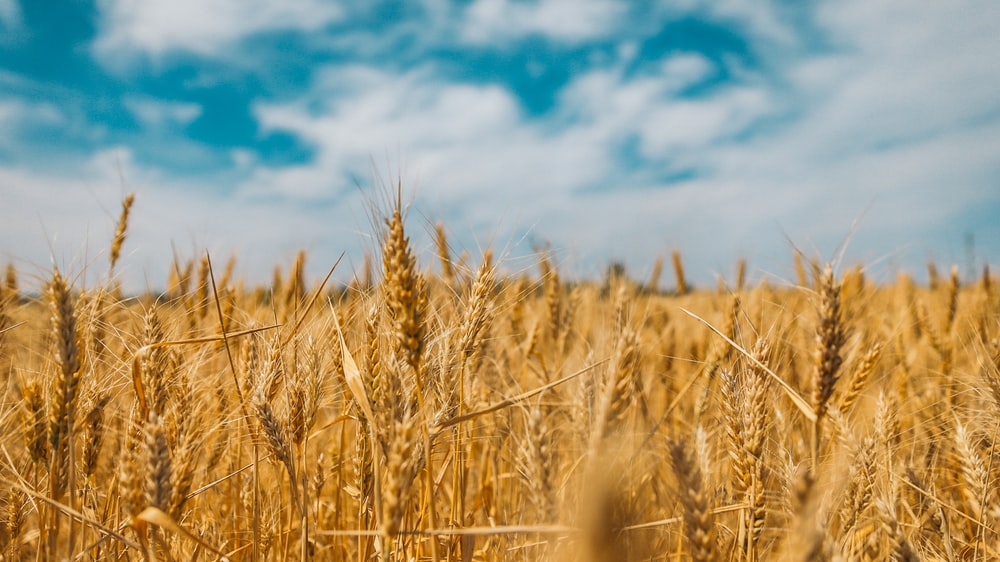Humanity is an incredibly complex structure. From computers to art, we’ve managed to create something truly special, which even we ourselves have a hard time understanding. However, amongst all the chaos our basic needs have remained the same. It is considered that humans have three basic wants. Water, shelter, and, of course, food. Food, in particular, has incredibly specific requirements in which it can thrive. For fruit trees, there exists an important need known as ‘chill hours’. ‘Chill hours’ act as a sort of wake-up reminder for plants by accumulating cold during winter. Eventually, when the weather warms up, hormones responsible for dormancy start to break down, thus allowing the plant to begin its bloom period. In an ideal world, these ‘chill hours’ would work as intended and ensure the proper timing of plant reproductive seasons, allowing for the beautiful fields of wheat you’re familiar with. However, we do not live in an ideal world. Crops continue to die, continue to wither; and with time, it will lead to massive food shortages. Today in this article, we seek to tackle the issue of how Climate Change affects ‘chill hours’ in plants, and your food supply as a result.
The year is 2004. The US has just landed a new rover on Mars, the Boston Redsox won a world series for the first time in 90 years, and everyone is raving over the Summer Olympics in Athens. The world is happy; and according to the masses, all is peaceful. However, despite everything that might be shown, 2004 to 2005 was not a great year. With one of the highest average temperatures on record, Niger underwent one of its worst famines ever. Over 3 million people in the country were affected, and 10 million people in West Africa as a whole felt its effects. Almost 800 thousand children went hungry every night for over a year. The relationship between this temperature and famine cannot be understated and is something that’s prevalent in our world up to this day. With ‘chill hours’ Climate Change heavily affects how plants propagate. By increasing the average temperature, they artificially add to ‘chill hours’ and increase their budding season. On the surface, this might seem great. After all, who wouldn’t want more time to pollinate? Though as proven by the Niger famine, premature bloom periods can have devastating effects on the production of crops. By having such long periods of exposure for their blooms/fruits, they’re far more prone to attacks from disease and insects. Irregular bloom seasons will further lead to irregular crop production, should there be any at all. Fruits will be deformed, and harvest will be damaged, not to mention the fact that there’s now an even greater chance of any seeds planted during that season being aberrant and as such inedible. A meta-analysis done on the effects of Chill Hours and Plant production has already found evidence proving that crops are affected by climate change. It was found that at current climate change augmentation rates, it could take as little as 15 to 20 years for California, one of the world’s largest produce regions, to become unsuitable for producing many of its signature crops. All the evidence is pointing in the same direction: that an increase in budding periods and a decrease in rest time for crops is leading to a major food supply issue; a food supply issue that could affect millions across the globe. Who knows; maybe in another 5 to 10 years climate change could hit you hard, taking away your beloved almonds or apples from grocery stores.
Now that we have an understanding of how exactly climate change affects ‘chill hours’ in plants, let’s try to take a closer look at why exactly climate change has been allowed to get to such a degree, and what the agricultural industry can do to stop it in order to make sure you don’t go hungry.
The reasons behind why climate change has evolved to the way it is now are too many to count and will be further discussed in other blog posts. There is one principal reason behind why climate change has gotten to this point; lack of awareness and accountability. Companies around the globe continue to burn emissions at unheard-of rates and pump greenhouse gasses into the atmosphere. It has only been in the more recent years that people have begun to take notice, and begin the push back against this frivolous annihilation
Now, why exactly hasn’t the agricultural industry tried to change in order to stop climate change? After all, they are one of the ones most affected by it. While it might seem counterintuitive at first, the agricultural industry actually has a lot to gain by not stopping climate change. The first motive is market interests. With food production down, and demand naturally going up, the food they do produce will be worth even more than before putting even more money into the farmers unaffected by the change. That was the offered explanation in an article by the Pacific Standard. Furthermore, change is expensive and many farmers are unwilling to take the costs required to become more sustainable. That is without mentioning that a lot of agricultural infrastructures have been built on the reliance on environmentally harmful methods, such as the usage of nitrogen-based fertilizer, and a shift in that foundation would be difficult, to say the least. But is that temporary skimp on money truly profitable in the long run? In fact, it was estimated by the International Food Policy Institute that it could cost somewhere between 7 and 8 billion dollars to just stop famine as a result of climate change. By then, it may not even be an issue that can be resolved by money. Can we eat money when these repercussions come? This lack of change from ourselves and our governments will conclude in tragedy if we don’t exercise change. Luckily, it is not too late.
Frances Beinecke, former president of the NRDC, once said that “climate change is not only an environmental issue – it is a humanitarian, economic, health, and justice issue as well.” Now more than ever, this statement proves itself true. It’s been shown that social justice and humanitarian issues have been related to climate change in some way or another, all as a natural consequence of our increasingly interconnected, human-centric world. With the sheer scope of how extensive climate change’s effects reach, it might seem impossible to fight against. However, pessimism is exactly what those who benefit from climate change want. They want you to lose faith and give up, allowing them to continue burning our planet dry. Resilience and action are how we stop it. Every little thing, such as voting for a green positive MP, or boycotting companies that are responsible, can all play a part in the bigger push towards our path to recovery. Support policymakers who understand the importance of climate; the Green Party of Ontario seeks to phase out fossil gas by 2030, while many other parties are also promising less aggressive actions.
With everything out on the table, I truly hope that you’ve gained some insight into the world of climate change and food production, and hope that with an increased understanding of how exactly it affects crops and the world around us, you too can come to your own conclusion on what it means for our future.
U.S Department of Agriculture. (n.d.). Climate change and winter chill. California Climate Hub. Retrieved June 8, 2022, from https://www.climatehubs.usda.gov/sites/default/files/Chill%20Hours%20Ag%20FS%20_%20120620.pdf
Luedeling, E. (2012, August 9). Climate change impacts on winter chill for temperate fruit and nut production: A Review. Scientia Horticulturae. Retrieved June 8, 2022, from https://www.sciencedirect.com/science/article/pii/S0304423812003305
Zane, N. (2015, January 14). The importance of chill hours for fruit trees. ANR Blogs. Retrieved June 8, 2022, from https://ucanr.edu/blogs/blogcore/postdetail.cfm?postnum=16468
Moon, E. (2019, July 31). Big AG monopolies have stifled small farmers. 2020 Democrats want to break them up. Pacific Standard. Retrieved June 8, 2022, from https://psmag.com/social-justice/big-ag-monopolies-have-stifled-small-farmers-2020-democrats-want-to-break-them-up
Nelson, G. C., Lee, D., Ewing, M., Santos, R. V., Magalhaes, M., Batka, M., Plazzo, A., Msangi, S., Ringler, C., Zho, T., Sulser, T., Robertson, R., Koo, J., & Rosegrant, M. W. (2009). Climate Change Impact on agriculture and costs of adaptation. Food Policy Report. Retrieved June 8, 2022, from https://ebrary.ifpri.org/utils/getfile/collection/p15738coll2/id/130648/filename/130821.pdf




